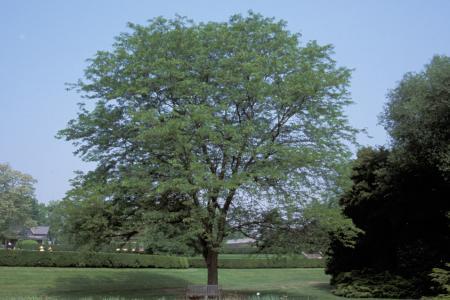| Gleditsia triacanthos var. inermis cvs. Thornless Honeylocust cultivars
|
| Description | Selections of Thornless Honeylocust are already popular in urban areas and are proven performers on difficult sites. The appealing features of the cultivars make this tree one of the first chosen for planting. This popularity has led to overplanting. Large Honeylocust densities are leading to pest and disease issues. |
| Usage | Parking lot island, buffer strip, sidewalk, street, specimen, reclamation. |
| Origin | Extreme southern Ontario, Central and eastern USA (mostly west of the Appalachians) |
| Hardiness zone | 3,4, depending on cultivar |
| Size | 15-23m |
| Form/texture | Oval to rounded, irregular, open, flat-topped. |
| Growth rate | Quick with good soil. |
| Leaf | Alternate, compound and bipinnately compound with small leaflets that turn yellow in fall. Fine texture casts light shade. |
| Flower | Inconspicuous, polygamo-dioecious, fragrant to many insect pollinators. |
| Fruit | Reddish brown twisted pod, 20-40cm long on species and variety, but not cultivars. |
| Exposure/culture | Full sun. Tolerates a wide range of soil types and soil pH. Tolerates wet to extremely dry soils. Easily transplanted. Extreme heat and humidity may be a challenge. Poor branch structure contributes to problems, prune to a central leader. Brittle wood leads to storm damage. |
| Comments | The common name arises from the sweet taste of the seedpod pulp. The species is rarely seen in the landscape because "�specimens are beset by a horrendous armor of long, triple-branched thorns that may be foot long, and as sharp as bayonets" (Peattie). The variety inermis is suitable for less formal non-turf areas where dropped fruit pods will not be a maintenance issue. Many male (fruitless) and thornless cultivars are available. "Out of the 20 drought-hardy species of seedlings tested, honeylocust was third in alkali tolerance and is also tolerant of salinity" (Fowells). Merits of honeylocusts include the thornless cultivars, tolerance of poor growing conditions, dappled shade for successful underplanting (even grass), small leaves with little mess and overall form and texture. Plant bugs and leafhoppers have been a consistent problem, but as the honeylocust population grows so does the incidence of even more pests and diseases. To avoid the consequences of overplanting Honeylocust in our landscapes, we must choose alternate suitable trees whenever possible. |
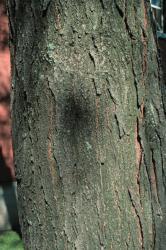
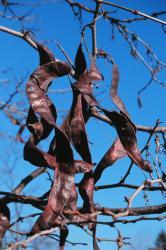
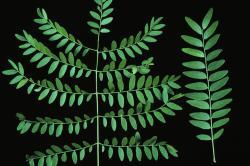
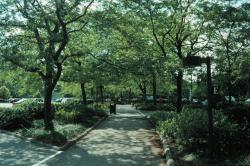
Reference:
Fowells, H.A. 1965. Silvics of Forest Trees of the United States. USDA Forest Services Ag Handbook #271.
Peattie, D.C. 1964. A Natural History of Trees of Eastern and Central North America. 2nd ed. Bonanza Books. New York, NY. 606pp.
